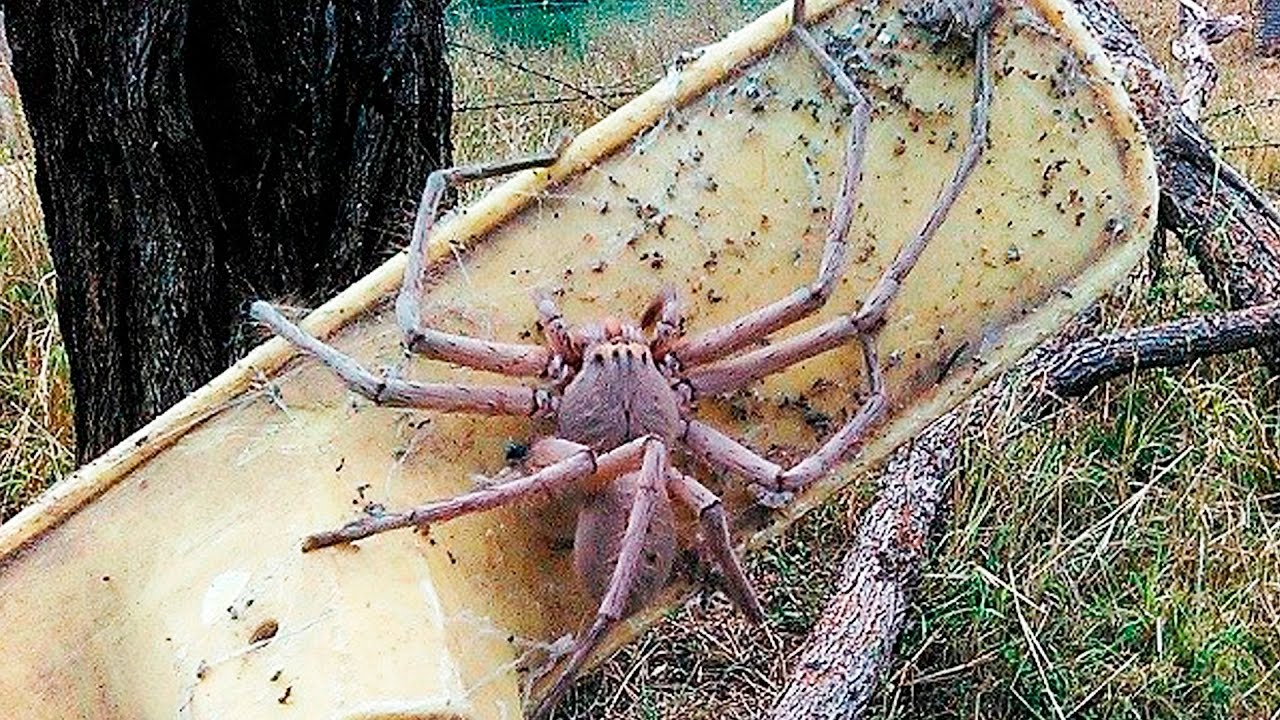
Hunter spider
Hunter spiders are members of the family Crab spiders, formerly known as xenopods. They are known for their huge size and hunting methods.
What is a Hunter Spider? What area is it located in?
Most members of the cancer crab family are common in both Australia and Asia, so they are often referred to as the Australian Hunter Spider.
The Australian Hunter Spider is a hairy spider known as the Cancer Spider (Venomous Spider) that lives on walls. This spider often appears on the curtains, scaring people into panic.
Hunter spiders are also sometimes referred to as cancer crab spiders because of their enormous size and appearance. It is also sometimes referred to as the banana spider because it occasionally appears on bananas.
In addition, there are larger species called wood spiders because they are usually found in trees such as mines, stakes, forest areas, etc.
Hunter spiders have a footprint throughout the United States, particularly in the subtropical regions of Florida, California and Texas.
hunting
The size of the hunter spider
Hunter spiders are known for their large size, with long thighs. Some male spiders have leg spans of up to 8-10 inches.
Hunter spiders are usually grey or brown, with some stripes on their legs. Many species of hunter spiders have flattened bodies, possibly to accommodate narrow living spaces, such as rock crevices and loose bark.
It is worth noting that their legs are not bent vertically relative to their bodies, but stretch forward and laterally like crabs, thanks to their curved joints.
What do hunter spiders eat?
Hunter spiders are nocturnal animals that feed on pests such as cockroaches, mosquitoes and crickets, and are actually very useful to us humans, especially in the tropics, where mosquitoes are rampant in Australia, and local residents will ask hunter spiders to eliminate mosquitoes.
Hunter spiders are nomadic spiders that do not weave webs to catch prey; instead, they use agile movements to catch prey, then use their jaws to feed on them, and sometimes they use venom to fix their prey and digest food.
Hunter spiders only weave colorful egg sacks when they reproduce, which resemble an inverted balloon, about the size of a goose egg, and store the eggs in the bag for the arrival of the baby spider.
Do hunter spiders bite people? Are they dangerous?
Hunter spiders occasionally bite! Despite their large size and somewhat frightening appearance, hunter spiders are not currently considered to cause harm to humans, so they are generally not considered dangerous.
When you are bitten by a hunter spider, it can be quite painful, with local swelling and even headaches, nausea, vomiting and irregular pulses. The symptoms of a bite vary depending on the species of spider.
According to research observations, hunter spiders usually do not take the initiative to bite people, and what exactly motivates them to attack is still inconclusive. Scientists speculate, perhaps to protect the oocysts and offspring.
"The man at the top of the food chain" Bell
Bites are very rare, suggesting that they do not bother humans. When you accidentally encounter a hunter spider in a fortuitous situation and are unfortunate enough to be bitten, please do not panic, as bites from these species usually do not require hospitalization and do not endanger your life.
Most arthropods are high-protein and low-fat, and the hunter spider is no exception, it is large, high in protein, and the man standing at the top of the food pyramid ---- Bell used it to replenish his strength outdoors.
Although the hunter spider does not take the initiative to bite people, if you really find the spider, please stay away from it and do not "die"!